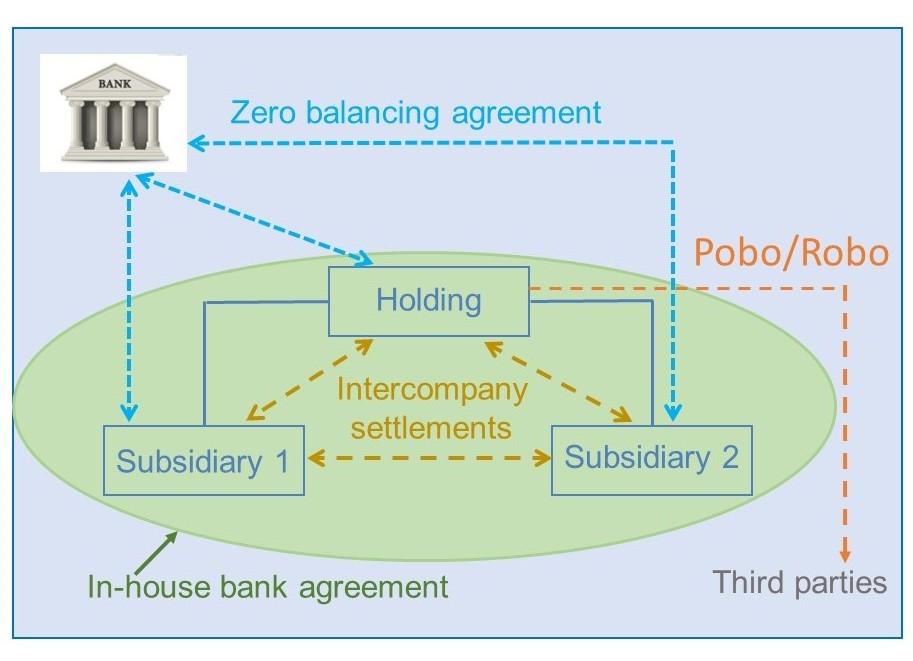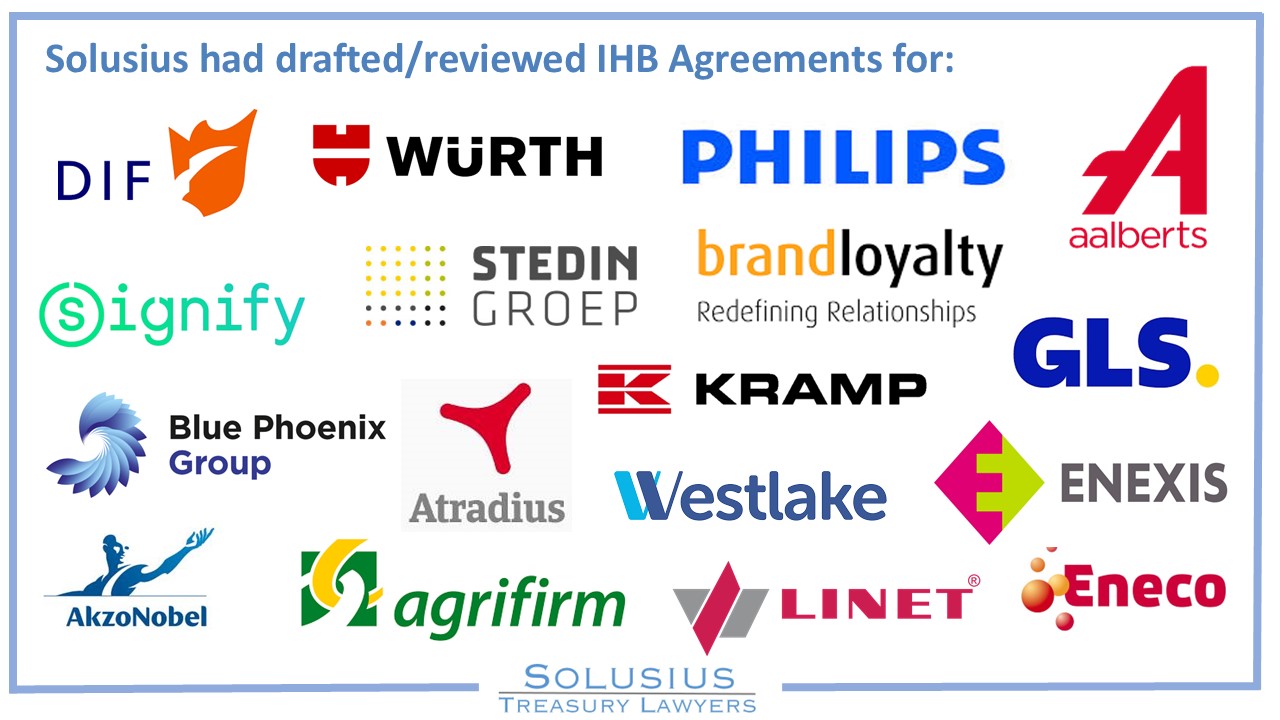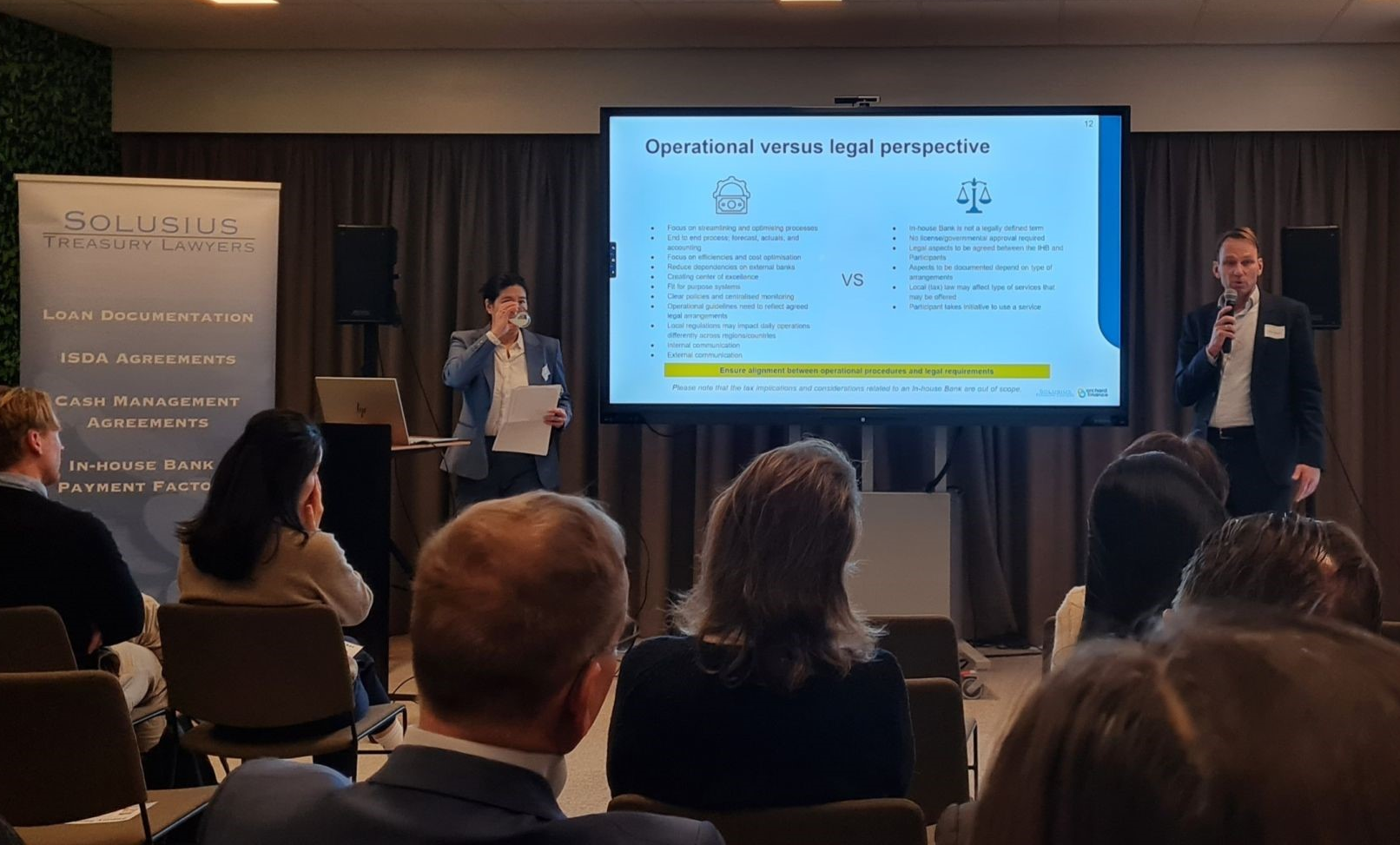Solusius can assist treasury departments on the legal structure and documentation of an In-house Bank and Payment Factory. This documentation may include settlement of intercompany deliveries, cash sweeping, direct debiting, payments made on behalf of other entities and overdraft facilities. Settlement of payments made om behalf could be rather complex if various companies within the group execute payments requests on behalf of group companies. Solusius has experience in setting up In-house Bank and Payment Factory agreements that enable a flexible means of enacting companywide or country specific amendments. Solusius Treasury Lawyers drafted in-house bank documentation which meets legal, fiscal and accounting requirements. This model has been checked and approved by the relevant departments of various multinationals in many counties in Europe, the Americas, Asia and the Middle East. For a description of the model documentation see In-house bank documentation.

An In-house bank is a great way to improve cash management, to mitigate transfer risks and to reduce costs. There are many Treasury Management Systems that offer the possibility to set up an In-house bank that offers multiple services to group companies. When an In-house bank is implemented, the primary focus is usually on the technical solution to operate the In-house bank. Generally tax advisors are involved to advise on applicable interest rates. However, legal advisors are often involved at a late stage or are not involved at all. This can be tricky approach because not having proper In-house bank agreements in place can violate compliance obligations, may lead to personal liability of directors and can turn out to be a costly affair. The article below elaborates on these risks in detail.
Main recent transactions:


DACT PEP session jointly with Orchard Finance
On 11 December 2024 Solusius organised with Orchard Finance a PEP session for the DACT – Dutch Association of Corporate Treasurers about in-house banks. While Ariane Hoksbergen of Orchard Finance elaborated on the operational side, Maarten Steyerberg of Solusius discussed the legal aspects of an in-house bank and the set-up of a proper and flexible in-house bank agreement. The session was completed by Beat Ringer of Würth Finance who shared insights in the set-up and ways of working of the Würth in-house bank, where a team of about 70 employees offers an extensive range of services to over 400 Würth group companies worldwide. Beat Ringer emphasised that the in-house bank agreement drafted by Solusius is very flexible and practical and that no issues came up during the implementation of the in-house bank documentation.The slides used in this presentation are available here.



